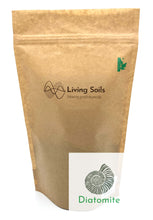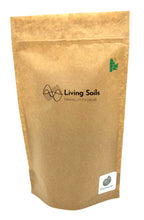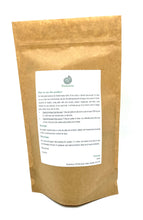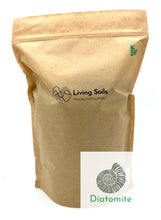
Diatomite (or Diatomaceous Earth: DE for short) is a very fine silica-rich powder. It is made from a naturally occurring, soft, siliceous sedimentary rock made up of the fossilised microscopic skeletal remains of hard-shelled plant-like algae called diatoms.
The make-up of diatomite is approximately 33% silicon (see our blog article here for the benefits of this for your plants), 19% calcium, 5% sodium, 3% magnesium and 2% iron along with several other trace minerals.
As an insecticide, it will help you get rid of insects such as:
- Fungus gnats
- Aphids
- Thrips
- Ants
- Mites
How it works
For the above insects, diatomite is a lethal dust with microscopic sharp edges that cuts through their protective covering and dries them out. It will not harm the worms or any of the beneficial microorganisms in the soil.
Caution
The downside to using diatomite is that it doesn't discriminate between pests and beneficial insects. Ladybirds, green lacewings, butterflies, bees, and other 'good guys' can also be killed if they encounter it. For this reason, we recommend using it only in circumstances where beneficial insects will not likely be around.
For a product that has pest control benefits but has no damage to beneficial insects, have a look at our certified organic Neem.
HOW TO USE
Foliar spray
To get the insects that are on your plants, we suggest you mist affected areas with a thin, evenly-distributed layer on both the top and undersides of leaves – aim for wet, but not dripping, foliage. Once the spray dries, the diatomite becomes effective.
This method is only suitable for plants in the vegetative stage, as in the flowering phase the plant will absorb the spray and it could therefore potentially be consumed.
Dosage
Create a spray using four tablespoons of diatomite per gallon of water and mist then wait until dry.
This method is only suitable for plants in the vegetative stage, as in the flowering phase the plant will absorb the spray and it could therefore potentially be consumed.
Dusting
Another method for treating plants that are not in flower is to dust them from top to bottom with the powder. Using a shaker or dusting canister, shake a fine layer of diatomite onto morning dew-covered leaves (if outside); otherwise, spray the plants with water, shake off the excess liquid and then dust them with the powder. Again, once this mixture dries, the plants will be treated against insect invaders.
If using the dusting or spray methods, make sure to keep the layers thin; otherwise, the diatomite could block light, preventing photosynthesis. You may need to occasionally rinse the foliage.
Again, this method is not suitable for plants in flower.
Top dressing
As a soil conditioner, apply diatomite evenly to the top of your substrate.
For pest control purposes, keep it dry - it may be a day or two before any effect is noticeable, but infestations from pests like fungus gnats can be controlled with proper application.
Dosage
3-4 ml per litre (or 1 tbsp per gallon) of substrate; apply after each watering and keep dry for pest control.
Precautions
When using diatomite, it’s recommended to wear eye protection and a dust mask, as the small particles can be irritating to your mouth and eyes.













